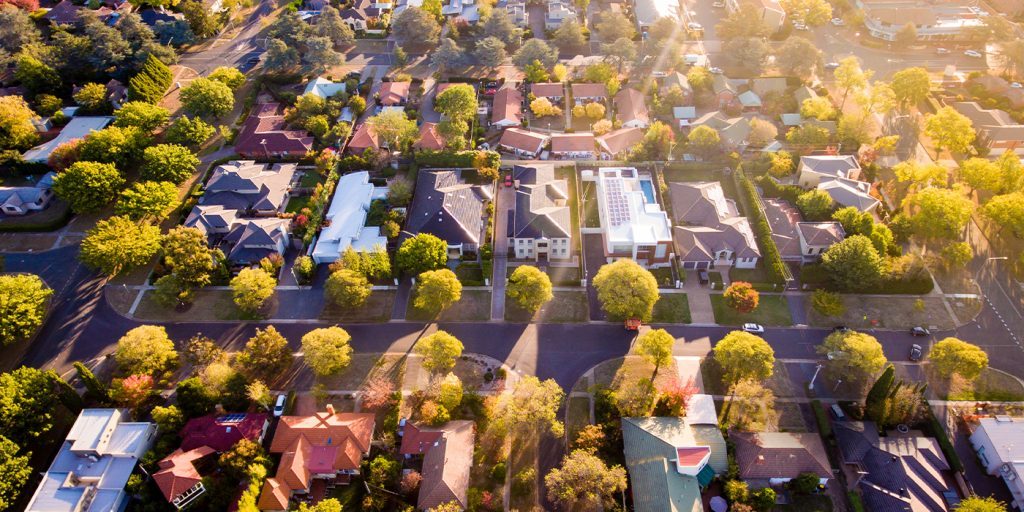In addition to COVID-19’s psychological and physical health tolls and a recessionary economy, 2020 and now 2021 have seen record-breaking climate disasters like wildfires, hurricanes, and record-breaking cold weather. The impact of these disasters has been significant for homeowners in high-risk areas: damaged and lost homes as well as premium increases. For insurers, catastrophe losses are far above historic levels. Each class of climate disaster brings with it its own risks and resulting insurance impact.
Wildfires
A combination of climate change, forest-management practices, strong winds, and drought-parched terrain contributed to the severity of the wildfires that led to more than 8.3 million acres being burned along the West Coast. This is almost double the 4.4 million acres that burned during the 2019 wildfires.
Moody’s Investor Service reported that wildfires in the Western United States have caused $5 billion to $8 billion in insured losses in 2020 — making it the third-worst year for fire damage in U.S. history, after 2017 and 2018. In the decades before 2017, wildfire losses never exceeded $3 billion, according to the Insurance Information Institute. Moody’s said insurers have responded by raising rates and refusing to renew policies in regions with high fire risk.
The wildfire tab comes on top of $20 billion in insured losses from other catastrophes in North America during the first half of last year, according to a separate report from Munich Re. While wildfires raged throughout the West in the Fall of 2020, Hurricane Sally dropped what the National Weather Service called “historic rainfall” on Florida and Alabama.
Extreme weather
Weather events previously forecast to occur once a decade or even once a century are happening with more frequency than predicted. According to the National Oceanic and Atmospheric Administration (NOAA), as of Oct. 7, 2020, there had been 16 U.S. weather-related disastrous events in 2020 with losses exceeding $1 billion each. These include one drought event, 11 severe storms, three tropical cyclones, and one wildfire, resulting in 188 deaths and significant economic effects. While the 1980–2019 CPI-adjusted annual average was 6.6 events, the annual average for the most recent five years (2015–2019) has leaped to 13.8 events.
Severe thunderstorms generated flash floods, tornadoes, and hail that caused $20 billion in insured losses, according to statements made by Munich Re. Those losses were tallied before Hurricane Isaias pummeled the Northeast with a wide swath of gale-force winds, Hurricane Hanna hit Texas, and Hurricane Laura struck southwestern Louisiana. Analysts projected that Laura alone caused $9 billion in insured losses. Damage from Isaias was estimated at $4 billion, and Hanna caused an estimated $350 million in damage. Hurricane Zeta’s devastation across Louisiana and North Carolina is expected to result in over $5 billion of losses. Munich Re chronicled the series of disasters that have struck North America during the first half of the year in a recent report.
While the impacts of the February 2021 Texas cold snap are still being assessed, Bloomberg reported that insured losses from the cold weather event could reach $18 billion, six times the yearly average. According to the Texas Insurance Council, the polar vortex event could result in the largest number of claims in the state’s history. From bursting pipes in homes, to damage from falling ice, and numerous road accidents, this weather event could result in $2 billion in insured losses in the Dallas-Fort Worth metropolitan area alone.
Catastrophe insurance
According to catastrophe modeler AIR Worldwide, only about 25% of economic losses from natural catastrophes are insured globally, and the uninsured portion could potentially exceed $1 trillion in a particularly bad year. In turn, this is leading to significant increases in the natural catastrophe protection gap.
Many attempts have been made to address the protection gap; however, a persistent lack of insurance coverage is continually made apparent following rare and large events. Reasons for the lack of catastrophe coverage range from perfectly rational affordability concerns to a litany of behavioral biases exhibited by consumers, insurers, and regulators.
How we’re making a difference
Avanta Ventures is actively working with several innovative startups managing catastrophe risk. Avanta Ventures companies are leveraging artificial intelligence and new data sets to better understand the risk to inform new catastrophe pricing models and underwriting guidelines. Here are a few:
Buzz Solutions
Buzz Solutions is building a technology platform to automate the process of power-line inspections for utility businesses. Using data collected from autonomous drones coupled with an overlay of the company’s proprietary computer vision-driven analytics, Buzz is able to more accurately and efficiently detect potential power-line failures. Over time, the company’s goal is to leverage the aggregate of the data it collects to inform predictive models for how and when a failure will occur. With downed power-lines being a leading cause of many wildfires, this aggregate data set and the predictive models from Buzz could be valuable for insurance purposes. Specifically, insurers could leverage Buzz’s solutions as a factor in wildfire models and more accurately forecast when and how a fire could start.
Cape Analytics
Cape Analytics has created a platform that leverages geospatial imagery to better assess the underwriting risk of individual properties. Cape’s core technology lies in the proprietary machine learning models it has created to automatically extract rich insights from any type of geospatial imagery. These insights represent granular attributes of properties from the condition of a rooftop to an analysis of vegetation and fuel around the house. The company then summarizes the multitude of these individual data points into a comprehensive risk score, which can be leveraged by insurers. In addition to streamlining underwriting processes, Cape’s score can be used to augment an insurer’s current models to better assess the risk of CAT-related claims.
Delos Insurance Solutions
Delos Insurance Solutions, a property insurtech managing general agent (MGA), has developed an insurance product designed to identify and offer protection to low-risk homes located within medium to high-risk wildfire regions.
Delos created its own proprietary wildfire risk modeling using artificial intelligence, scientific methodologies, and continuously updated data sets. Delos can underwrite and price insurance for homes that may have been considered high risk by other insurers, but which Delos risk analysis shows may actually have lower exposure to wildfire. The technology also enables Delos to provide risk-mitigation services to each policyholder. Every homeowner receives ongoing notifications of how their risk is changing and the most effective ways to harden their home to wildfire.
Kin Insurance
Kin Insurance is a direct-to-consumer home insurance carrier that has created a product engine that leverages a combination of 3rd party data sources and proprietary analytics to better understand risk at a granular level for each home. Kin’s technology platform provides it a unique competitive advantage in writing policies in high CAT risk locations.
The core of Kin’s platform is built upon its ability to ingest a myriad of data sets across multiple sources from government records (fire hydrant locations, building permits) to aerial imagery to real estate records. These data sets are then synthesized to derive actionable insights on an individual property level, which enables Kin to micro-segment and price risk. Early results have been promising with Kin demonstrating strong actuarial metrics around loss ratios and claims even in areas that would traditionally be considered high CAT risk geographies.
As cities, states, and countries grapple with how best to solve the climate crisis, the insurance industry is at the forefront in managing its increasingly severe economic consequences. To do so effectively, insurers must rapidly adapt current processes around risk analysis, underwriting, and mitigation leveraging real-time data and software platforms.




